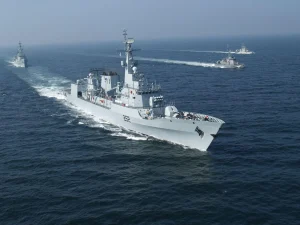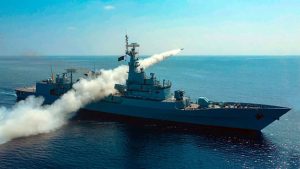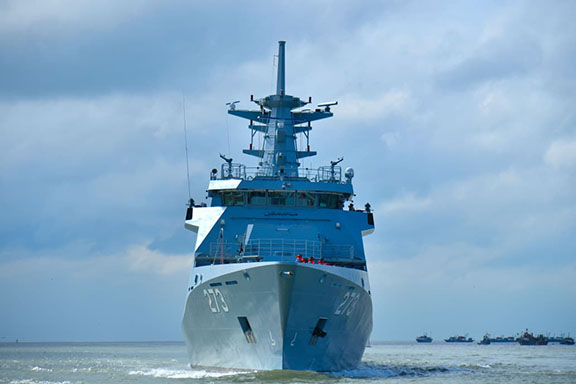Every year on 6th September, Pakistan observes Defence Day to honor the courage and sacrifices of the Armed Forces and the resilience of the nation. The day is remembered not just as a date in history but as a living symbol of unity and defiance in the face of aggression. While the battles on land and in the skies are often highlighted, the role of Pakistan Navy in the 1965 war remains a chapter of extraordinary daring and strategic brilliance.
In September 1965, the Navy was still in its early years, comparatively small in size but determined in spirit. Tasked with safeguarding the country’s long coastline and critical sea lanes, it responded with remarkable resolve. On the night of 7th September, a flotilla of Pakistan Navy ships set out on what would become the famous Operation Dwarka. Sailing deep into enemy waters, they struck the coastal town of Dwarka, destroying radar installations vital to Indian air operations. The attack reverberated far beyond its immediate impact—it demonstrated that Pakistan Navy had both the reach and the will to challenge a much larger adversary.
At the same time, Pakistan Navy’s pride, submarine Ghazi, kept a constant watch over the Arabian Sea. As the only submarine in the region at that time, its very presence tied down Indian naval forces and ensured that Pakistan’s sea lines of communication remained secure. This asymmetric edge played a key role in keeping the adversary’s larger fleet in check.
Yet, Pakistan Navy’s story did not end in 1965. In the decades since, it has broadened its role far beyond wartime operations. From extending a helping hand in humanitarian relief efforts, whether in floods, earthquakes, or overseas emergencies, to protecting Pakistan’s economic future through the Blue Economy, Pakistan Navy has worked quietly but consistently for national progress. Its tradition of naval diplomacy, including multinational exercises such as AMAN, has strengthened Pakistan’s ties with the world, while its current command of Combined Task Force 150 underscores its contribution to global maritime security.
Marka-e-Haq is a staunch reminder of Pakistan Navy’s battle readiness and its resolve to protect Pakistan from its enemies. Despite being a much smaller Navy, Pakistan Navy proved to be a deterrent force at Sea and ensured that the enemy was kept at bay. Sea Lines of Communication (SLOCs) remained open and International trade kept running smoothly. Furthermore, INS Vikrant’s propagated threat was nullified through strategic position of Pakistan Navy’s vessels with Ships and submarines deployed in the Arabian Sea. This led to a resounding success against a bigger Navy and it highlights the bravery and technological sophistication of the Navy.
Beyond its historic role, Pakistan Navy today operates across four dimensions – surface, air, sub-surface, and land. This makes Pakistan Navy a balanced and versatile maritime force. Its surface fleet safeguards sea lines of communication, while naval aviation extends surveillance and strike capability from the skies. Submarines provide Pakistan with a potent deterrence beneath the waves, and specialized units like the Navy’s Marines and Special Service Group (SSG-N) ensure readiness for amphibious and unconventional missions. Together, these dimensions enable the Navy to respond effectively across the full spectrum of maritime operations, from traditional defense to modern security challenges.
To strengthen this multi-dimensional capability, Navy has in recent years undertaken significant modernization and acquisitions. The induction of advanced Hangor-class submarines, Type-054A/P frigates, and MILGEM-class corvettes has added cutting-edge technology and firepower to the fleet. Enhanced maritime patrol aircraft and state-of-the-art surveillance systems are expanding Navy’s operational reach, while indigenous shipbuilding at Karachi Shipyard underscores Pakistan’s growing self-reliance in defense production. These acquisitions not only reinforce Pakistan Navy’s ability to defend the homeland but also enhance its role as a credible partner in regional stability and international maritime cooperation.
On this Defence Day, as we remember the heroes of 1965, Pakistan Navy’s journey reminds us that the defense of a nation is not only about weapons and battles. It is also about vision, adaptability, and service to the people. The sailors who once struck Dwarka carried the same spirit that today drives the Navy to protect our seas, serve humanity, and represent Pakistan with pride on the international stage.


